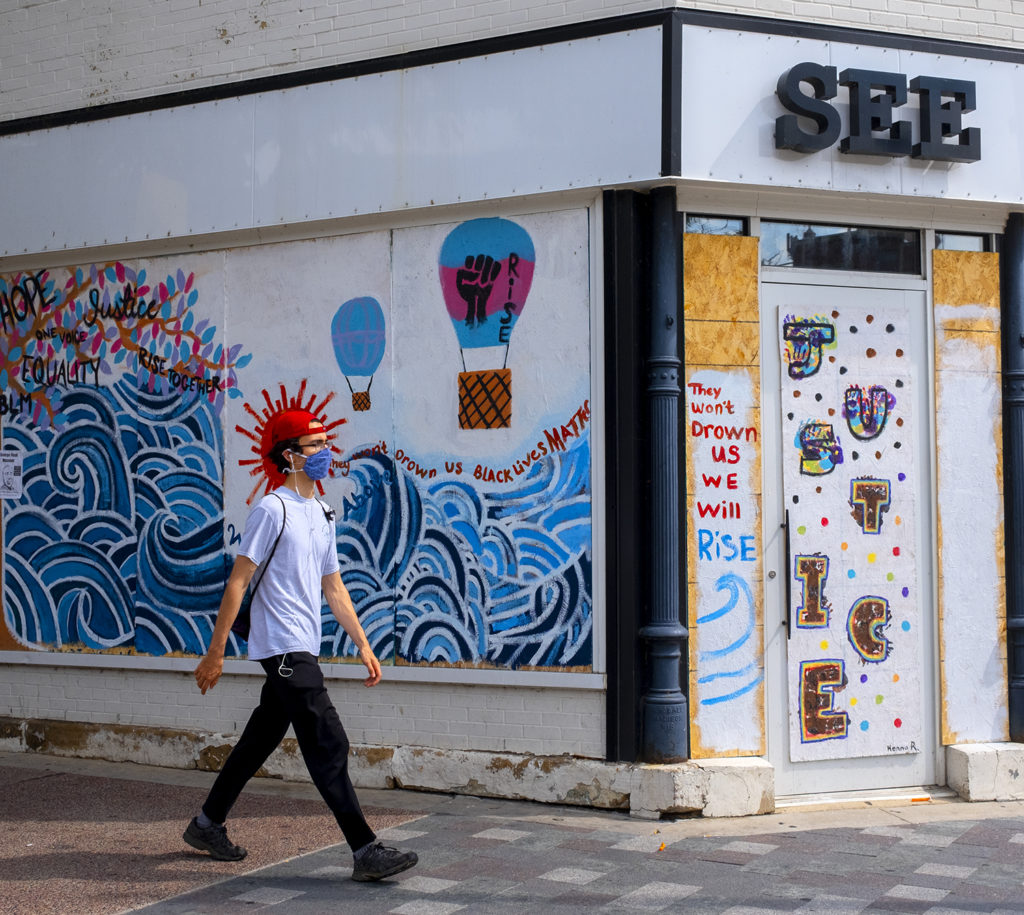This week we introduce a new interview format, with the women of UP collaborating on more in-depth interviews with other female photographers. We are proud to launch this new format with an old friend to many of us here at UP, Melanie Einzig.
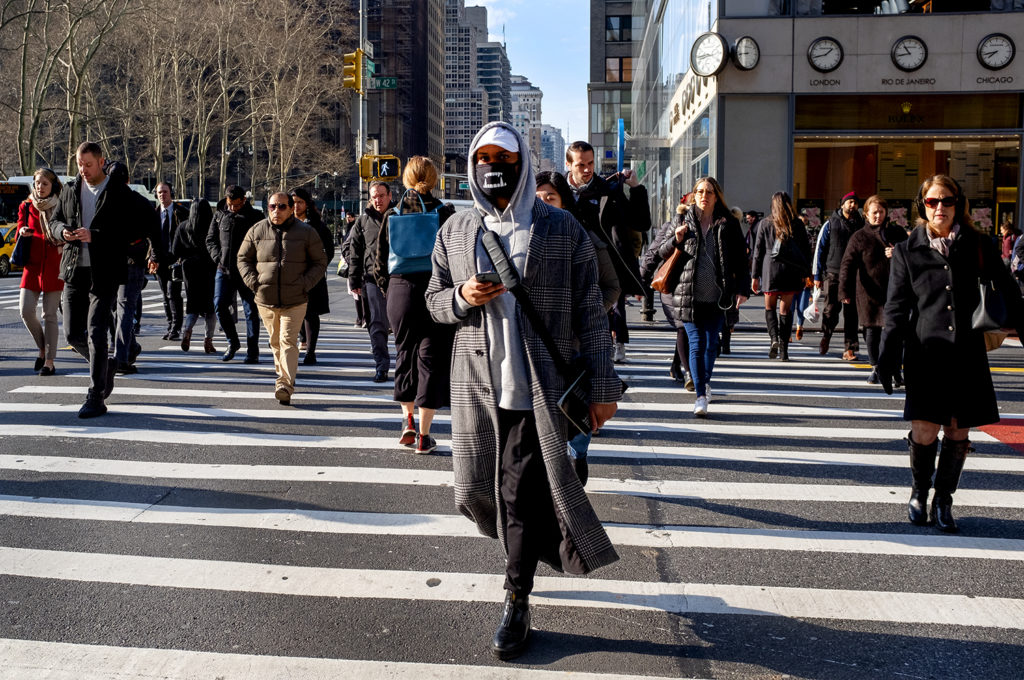
Seventeen days before the governor issued “New York State on Pause”
Graciela Magnoni:
Hi Melanie! We are delighted to have this casual discussion with you about your work and about photography. First of all, I would like to say that I love your street work in New York. It always feels genuine, gentle, subtle and spontaneous. You completely vanish from each frame. I find your candid work very consistent and effortless.
There are people that argue that candid photography always tells the truth, because it portrays a real scene and a real moment without influencing it, without any input from the photographer. Personally, I don’t agree with this view. The photographer is always the author of the image and as such, he/she always has the choice of what to include, how to frame it, and which moment to capture. These are powerful decisions that ultimately express a point of view. For me this is the power of an image.
What is your view on candid photography? Do you think we should always trust its message? Do you think candid photography can’t be biased? Does it show an objective view of reality and is it up to the viewer to give it meaning? Or should it be perceived as any other form of art, with a strong point of view? Could you use your work to elaborate a bit on this?
Melanie Einzig: Hi Graciela, I enjoy your work as well. I’m glad you experience my work that way. That means a lot to me. For thirty years street photography has been an integral part of my lived experience in New York. So, it’s challenging for me to step out and theorize about it. Having worked for the Associated Press after art school, I learned the power and importance of being as objective as possible when making news photos and writing captions. What I love about street photography is that it is freewheeling and there are very few rules and regulations to making pictures. The most interesting work, to me, presents a clear social document, somewhat objective, and through its chosen form, coupled with chance, we are able to feel both the world and the photographer. And that does not necessarily mean there is an opinion or one message. It’s often multiple messages on multiple levels. That is what I hope my work offers as well.
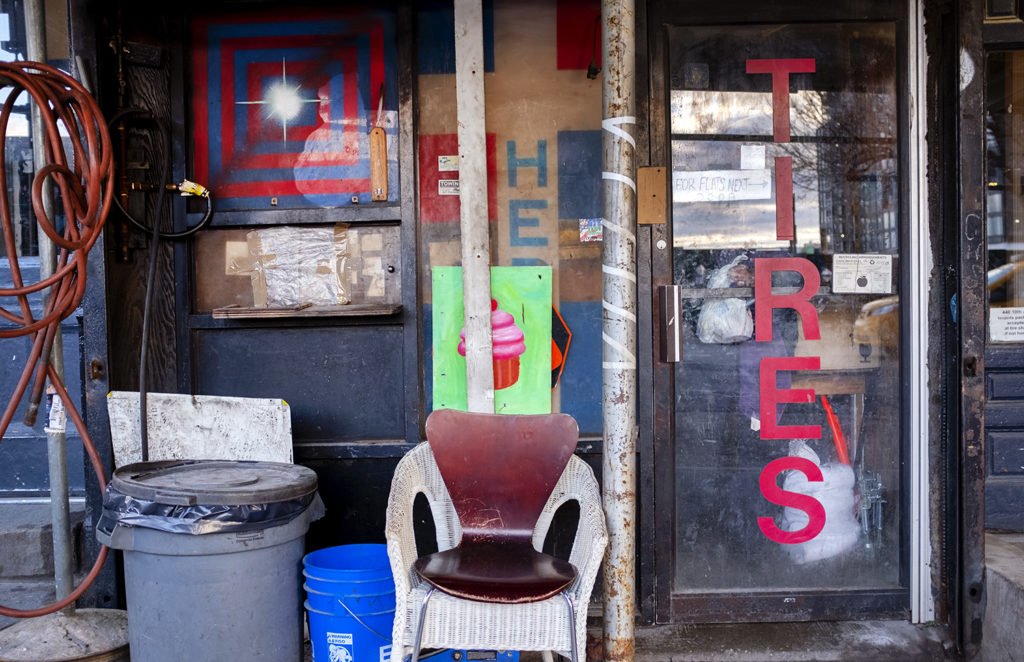
Melissa O’Shaughnessy:
I love and agree with Graciela’s observation that your photographs have a gentle and effortless quality, and being lucky to call you a friend, I can attest to those qualities in you personally. After working on the streets of New York for 30 years, I’m interested in how your work has grown and evolved over the years. Street photography is a game of quick and instant reaction to the world as it unfolds, but I think little by little we learn about ourselves in the process. What have you learned about yourself and how do you try to communicate this through your work? How has your work–and what you find interesting–changed over the three decades that you’ve been a photographer?
I’m also interested in your statement that good street photographs are a “clear social document.” Can you elaborate on this?
Melanie Einzig: Thank you, Melissa for your friendship and kind words!
The way I make pictures has in many ways stayed the same for the past twenty years. Living and working in New York I spend a lot of time running here and there taking photos along the way. Over time, several bodies of work have grown in depth and breadth. I’ve also tried new approaches with slideshows and sound, diptychs, iPhone reflection photos, short films, drawings, and I’ve written many poems that have not been refined. What I learn over and over about myself is that being creative is vital to my well-being.
My process is more akin to stream of consciousness writing than any game I can think of. If I’m trying at anything it is to make sense of what it means to be human in this moment in time. The way I communicate is through the work. Each photo has its own messages. If what I’m expressing is not available in the picture, then I have failed.
Responding (not always directly) to the historical moment is important to me. Right now, I’m reeling from living on an ambulance thoroughfare during a pandemic surge. Photographing every day out the window has carried me through. I support the Black Lives Matter protests and I believe that we are going through profound long needed social transformations. So, I’m reading, listening to podcasts, absorbing what I can. By “clear social document” what I really mean is that I like a vivid picture of something related to the human condition. I’m less interested in street photography that relies solely on gesture, light and color. But I’m sure I could find exceptions to that claim.
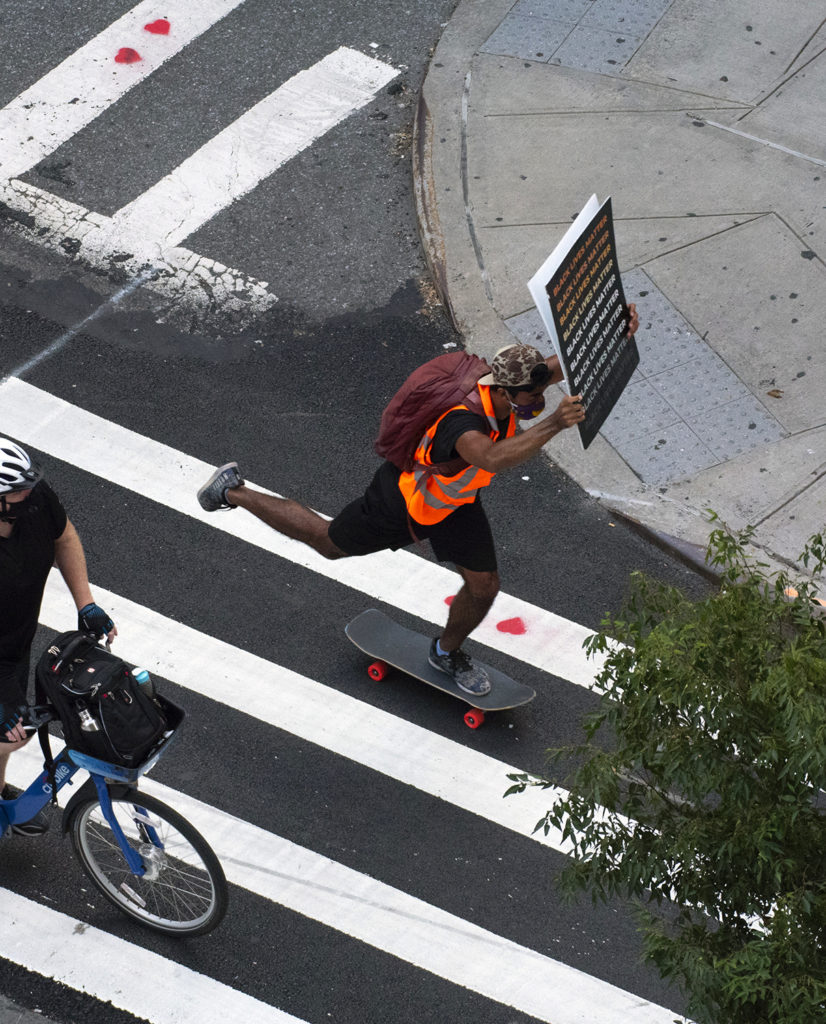
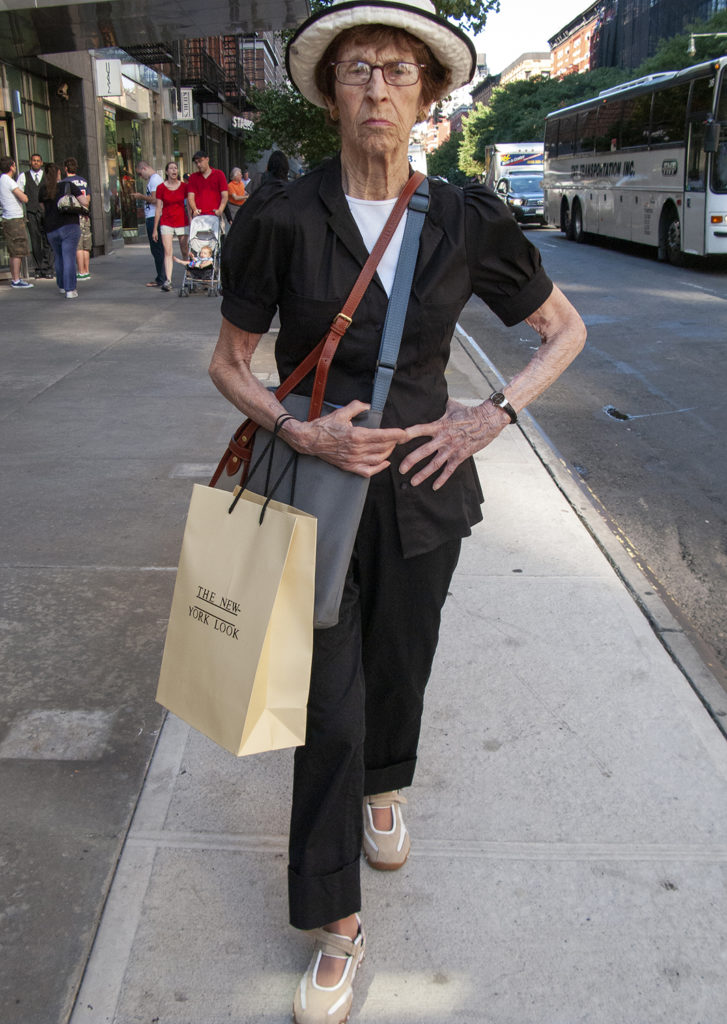
From Women on the Street, 1998-present
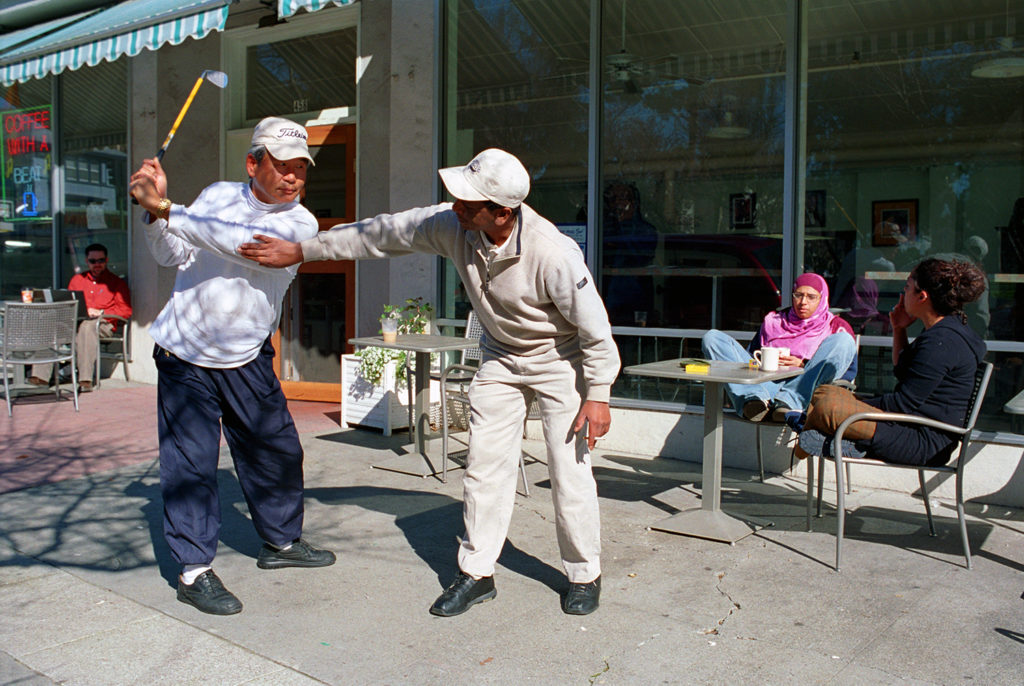
From USA Photos, 2001-present
Julia Baier:
Dear Melanie, I am very happy to get to know you better through this interview, because to be honest, I only knew you briefly from the Street Photography exhibition at the Deichtorhallen in Hamburg before our discussions at UP. I am all the more pleased to have had a closer look at your work and to get in contact with you now. I really like your photos a lot!
You wrote in your previous answer that you have experimented with many other art genres besides the 30 years of street photography, from short films to poems to drawings. I too have recently discovered more and more for myself that I like to write and I occasionally draw as well. Nevertheless, I know that no other discipline can replace the importance of photography for me. No other medium will come so close to what I can express about photography.
Do you also find yourself in this statement? Is photography also so elementarily important to you that other disciplines cannot come close to its meaning? I can only find your photographs online. Will your experiments remain experiments that are not meant for the public and were only created for you personally? I would be interested in the relationship between these different fields of work in their meaning for you and what makes photography so unique for you.
Melanie Einzig: Hi Julia, great to become familiar with your work through UP Photographers. I joined In-Public back in 2002 and resigned in 2016. So, we just missed each other! The exhibition you saw at the Deichtorhallen Hamburg: Street. Life. Photography will open this Fall at Fotomuseum Winterthur in Switzerland.
I somewhat agree with your statement that no other discipline could replace photography since it has been my medium of choice for so long. However, I’m open to being inspired by other creative pursuits and not afraid to follow what sparks my interest. Different times call for different ways of working. Occasionally I have the thought: if I suddenly went blind, I would need to make music.
I’m still kind of old school and distrustful of putting everything on social media. However, since the beginning of web pages I’ve always posted a lot on my site based on what is important to me at that time. In my opinion, photographers’ websites are the more liberated corners of the internet. Perhaps one day I will add work other than photography to my site.
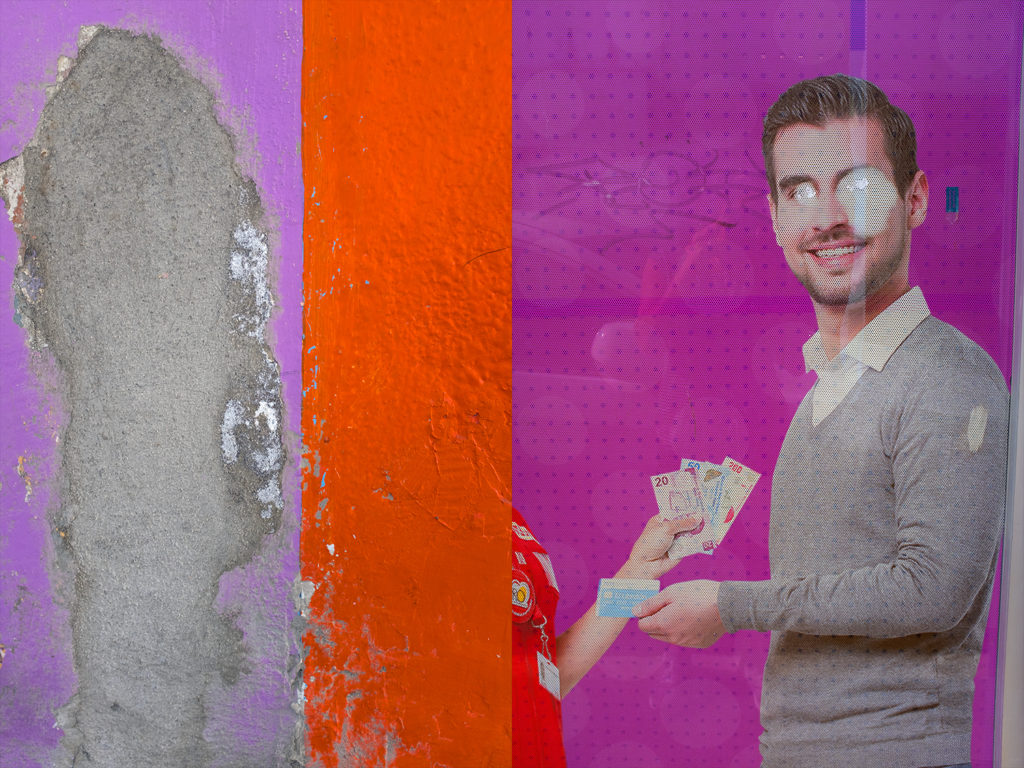
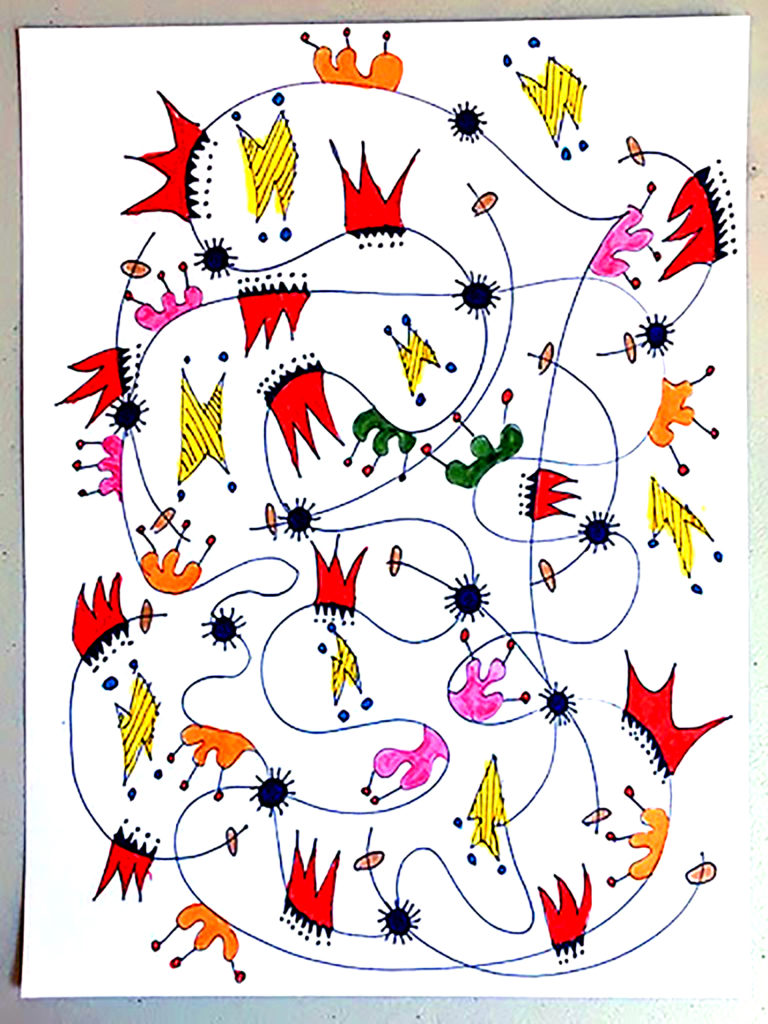
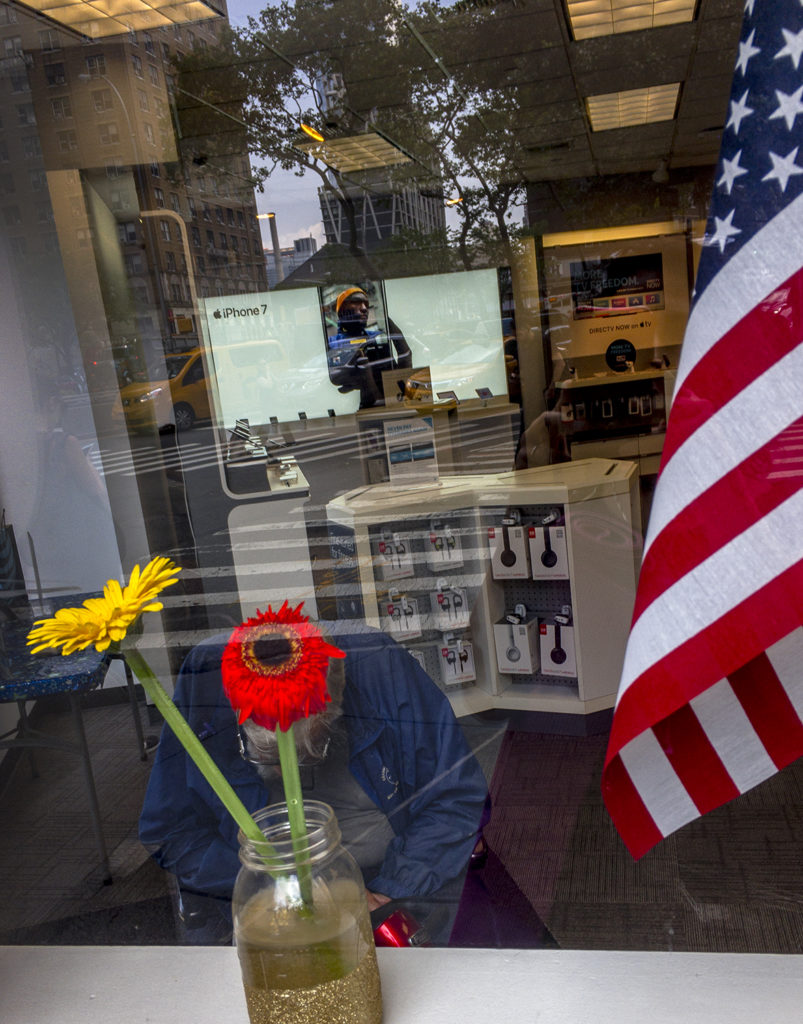
Eléonore Simon:
Melanie, it is great get to know you and your work better through this conversation! It’s exciting to get an insight into your thought process, experimentations and inspirations. I am really drawn to your reflection series, as I find images that require deciphering truly captivating.
When I think about your photography, I immediately think about New York and how integral the aura and the history of the city are in your work. I was surprised and pleased to discover other bodies of work with USA Photos 2001-present — of which you shared an image here — along with a body of work in Mexico on your website.
With the relative democratization of travel and the vast offer of street photography workshops across the world, a substantial part of the street photography practice has been connected to traveling. And certainly, photography is a wonderful tool for discovery. That said, these last few weeks have made me reflect on what it means to photograph close to home, not only in a physical sense because of the pandemic, but also in terms of embracing personal spaces as creative spaces, and photographing issues that are closer to us, our neighbors, our communities.
Could you tell us about your relationship with New York City, and whether your practice differs when you are traveling? As you talked about the importance of responding to the historical moment, could you speak about how your photography has been affected in the last couple of months and whether you foresee your practice evolving as a consequence? In particular, I am really interested in the project you have been shooting from your apartment window during the lockdown period in New York, and would love to hear more about it.
Melanie Einzig: Hi Eléonore, yes, I can relate to your sentiment of wanting to photograph what is close to you. And though travel is pleasurable and mind opening it’s sometimes difficult to make a meaningful photo as an outsider observing a culture over a short period of time. Photography perpetually renews my sense of wonder, a feeling I value in myself and others, and in New York the density allows for this to happen on a very short walk around a neighborhood.
The photos taken out my window is something I’ve thought about doing since moving to this apartment five years ago. However, I’m not a very domestic person and my work as a freelance photographer kept me from putting in the hours at home. This Spring I didn’t have much of a choice because of the pandemic. I took a daily walk to take photos but being perched at the window like a cat felt more inspiring and less depressing. The photos still need to be edited and thought through but one thing I noticed is that from above, the face masks also appear as blindfolds and that’s how it feels right now. None of us really know where we are headed and yet if we are surviving, we make our way. And the protests continue which is good. So, back to your point, it’s incredible how much can happen in one day on one street corner, close to home.
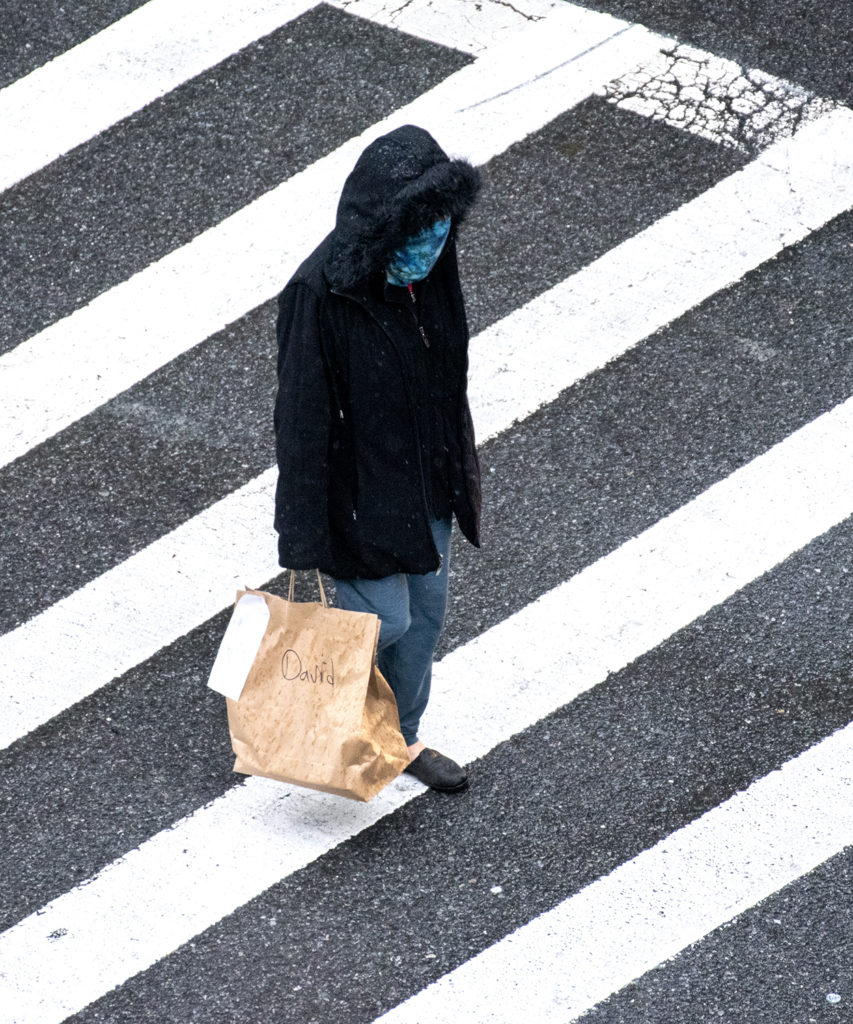
Alison McCauley:
Hi Melanie, I’ve really enjoyed this conversation so far. It’s been a wonderful opportunity to get to know you a little and to dive deeper into your work.
When I look through your (pre-covid) personal work, I feel that so much of your photographs exude positivity. The images seem joyous and often subtly humorous to me. Even when the scene shown isn’t particularly happy, a positivity still seems to shine through. Even your magic marker drawing is joyful!
I was wondering if you see your images this way or if this is just my interpretation. Do you think your images reflect your personality or a part of your personality? Are you consciously drawn to joyful scenes when you’re out photographing?
Melanie Einzig: Hi Alison, It pleases me that you see joy and humor in the work. If my photos present in that way I’m glad! It is my intention for them to be imbued with a life force and offer some hope in our crazy human situation. My personality is reflected in varying degrees in many of the photos. Recently I learned that the average honeybee will only produce about 1/12 of a teaspoon of honey after collecting nectar from thousands of flowers in her lifetime. For me, taking pictures and finding the good ones is similar to this process.
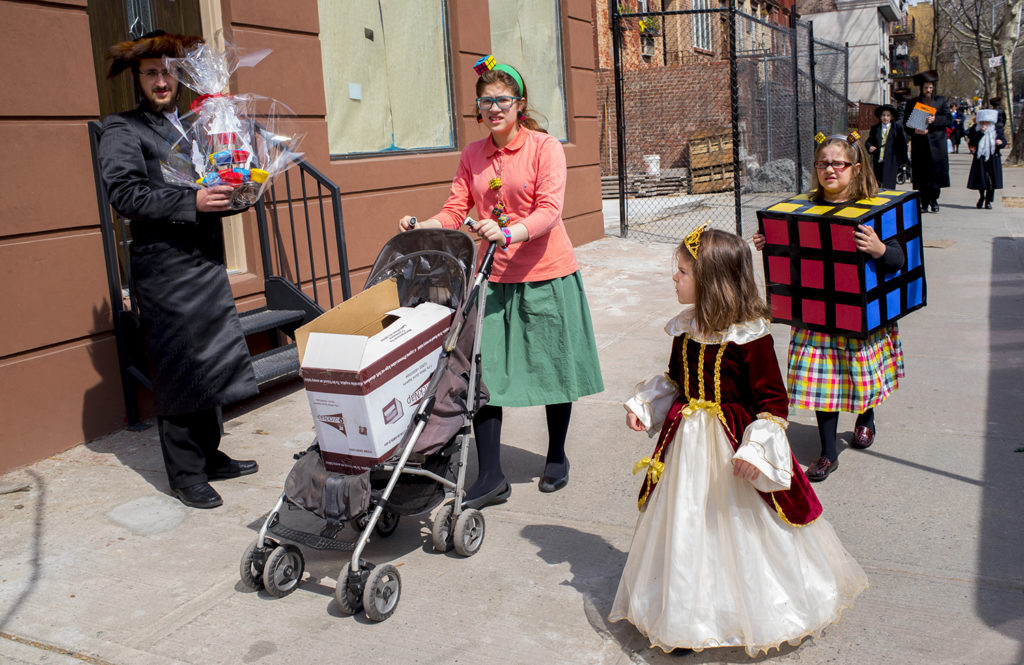
2008-present
Graciela Magnoni:
Melanie, it was lovely for all of us to connect with you through this interview. This is a new project. We are planning to interview many other female photographers around the world in an informal and friendly way. Thank you for your time.
I hope to see you in New York very soon! But in the meantime, this is my last question.
I keep thinking about the phrase you mentioned above if I suddenly went blind, I would need to make music. I love this idea. What kind of music do you like?
Melanie Einzig: Thanks Graciela. It was a pleasure to connect with all of you as well and I appreciate your interest in my work. I like almost all kinds of music except for the kind that has been playing too loud in restaurants for the past decade!
